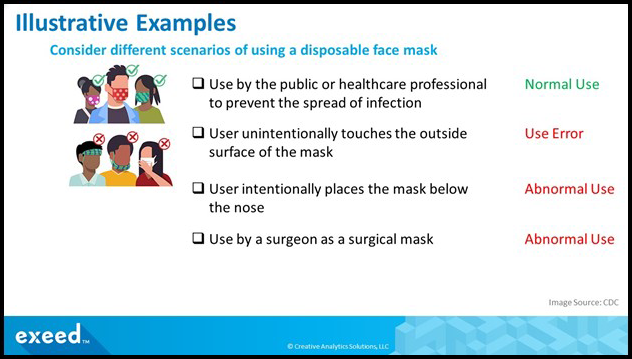Begin Your Risk Analysis with Intended Use and Foreseeable Misuse
Risk analysis is a requirement of ISO 14971:2019. It needs to begin with a clear understanding of the intended use and foreseeable misuse.
One of the challenges in risk analysis of medical devices is the diversity of use scenarios based on the target medical purpose and use environments. That is why ISO 14971:2019, the recently revised International Standard for Risk Management of Medical Devices, requires that risk analysis begin with a clear understanding of the intended use and reasonably foreseeable misuse. Analysis of the intended use and potential misuses provide the appropriate context and a framework for the subsequent risk analysis. The end result of any risk analysis is a detailed identification of hazards, hazardous situations and harms, and estimation of the risk associated with them.
Defining Intended Use and Potential Misuse
So, how do you go about defining the boundaries of the intended use and the range of potential misuses?
Intended Use: According to ISO 14971, the intended use is defined as the “use for which a product, process or service is intended according to the specifications, instructions and information provided by the manufacturer”. The final scope and definition of the intended use is developed based on the target medical purpose, patient and user profiles, location in the body, use environment and the operating principle.
Once this scope and definition is clearly established, the next step is to consider all reasonably foreseeable misuses. Keep in mind that this can be an iterative process throughout the design and development process.
Reasonably Foreseeable Misuse: The keyword here is “reasonable”. Reasonably foreseeable misuse refers to the “use of a product or system in a way not intended by the manufacturer, but which can result from readily predictable human behavior”. There are two components to the scope of “misuse” – Use Error and Abnormal Use. Use Error refers to unintentional mistakes that can happen during use. Abnormal Use refers to intentional acts of misuse, such as not following directions, and/or using the medical device for a different off-label purpose. A physician, for example, can decide to skip steps in the procedure, or use it on a different patient population different from the manufacturer’s intended use.
Let us take the example of a disposable face mask. The normal use, use-error and abnormal use scenarios are illustrated in the following figure.
The first step in the risk analysis, therefore, is a clear definition and scope of the intended use. Based on this definition, a cross-functional team should list all potential use scenarios that may result in a use-error or abnormal use. Such use of scenarios provides the starting point for identifying hazards, hazardous situations and resulting harms.
Check out the video below for further details and specific examples.
There is a lot going on in the medical industry right now. To stay current, subscribe to our YouTube Channel for our weekly updates. You can also sign up here for our exclusive, in-depth analysis of key topics in the medical industry. Contact Us if you have any questions or comments, or if you would like to learn more about any specific topics related to risk management.
References
ISO 14971:2019 – Application of Risk Management to Medical Devices
ISO/TR 24871:2020 – Medical Devices – Guidance on the Application of ISO 14971
You may also like these articles:
5 Key Changes in ISO 14971:2019
ISO 14971 Basic Concepts – Hazard, Hazardous Situation and Harm


